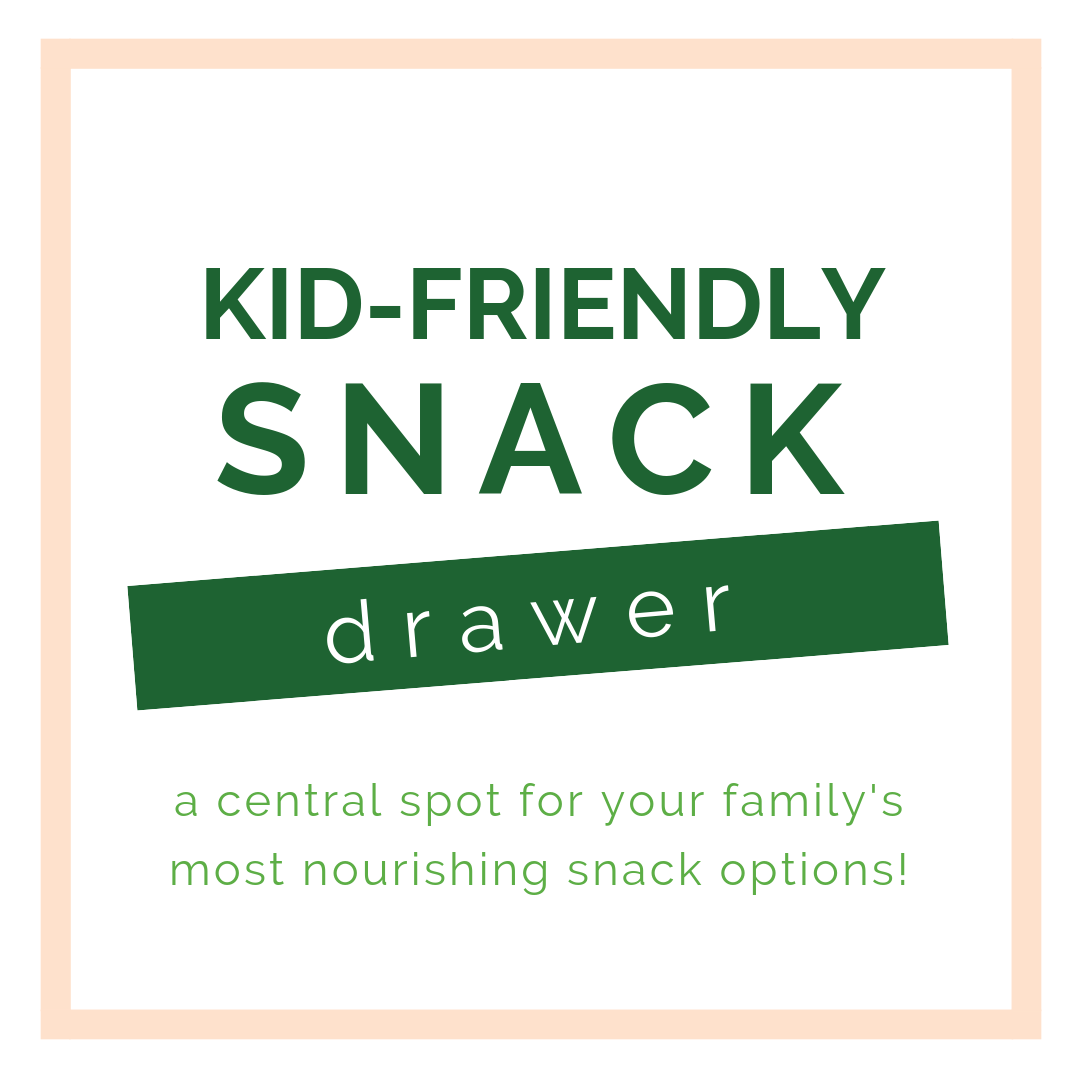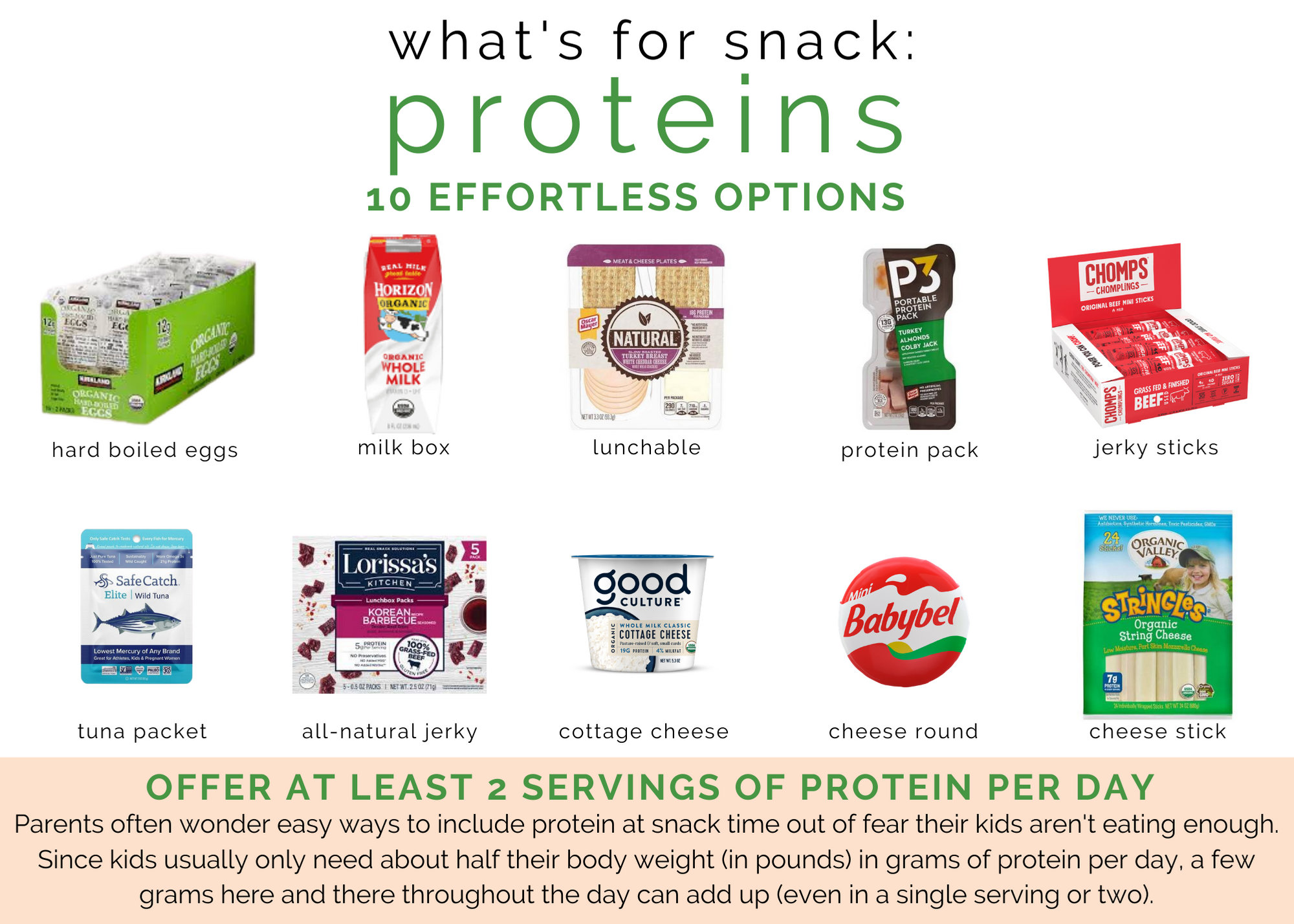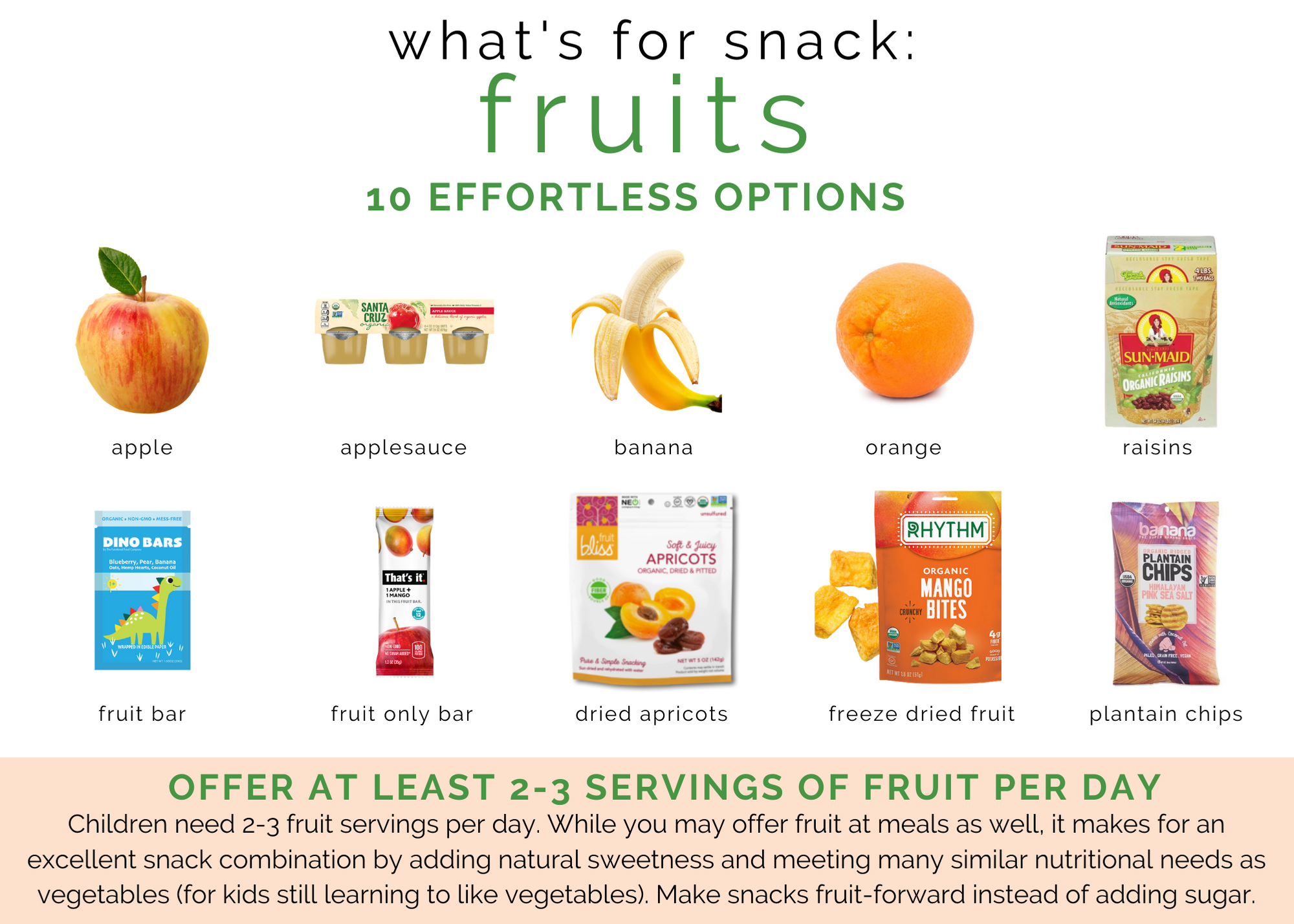Healthy Snack Ideas for Kids
I am frequently asked for protein-rich snack ideas and with good reason. It is totally normal for young kids to be learning to like meat, poultry, and other sources high in protein. These are the protein-rich options we often offer at meal times...only to be left uneaten by our littles.
But before we jump into focusing on protein-rich snacks, let’s consider: is that really the nutrient our kids need the most?
Maybe, but maybe not.
Healthy Snack Ideas for Kids
As mentioned on previous posts on snacking, we want to consider both what nutritional gaps our child has and how snacks can help fill them.
For more information on common snack-related questions, see these posts:
High Protein Snacks for Kids
When we look at How Much Protein a Preschooler Needs, we see that on average young kids need about one-half grams of protein per pound of body weight.
As shared here, when you multiply this amount of protein by your child's weight, you get the average amount of protein they need to meet their nutritional needs each day.
For a 26-pound two year old, this would be 13 grams of protein per day.
For a 37-pound four year old, this would be 16 grams of protein per day.
If you take that a step further to see how that divides up over the course of the day (between three meals and two snacks), that's about 3 g of protein per meal or snack (which is equivalent to half of a scrambled egg or cheese stick, or half-cup of milk!).
Here are some healthy snack ideas to help your child eat more protein:
For more ideas on how to increase the amount of protein in your child’s snacks, click here. My Combination Cards Snack Deck show ideas to increase the amount of in kid’s snacks for both premade and homemade options of snacks like toast, crackers, and dips!
High Fat Snacks for Kids
If you read this post on a child’s protein needs, then you also should have also seen that children need even more fat each day (than they do protein).
Besides being a critical building block for growth and development, adding fat to your kid’s snacks make them more satisfying (and thus keep them full for longer).
If our kids only need a light snack (so it doesn’t disrupt the next eating opportunity), then adding in extra fat can backfire. But for those times we need our children to eat enough to stay satisfied (even if they only take a few bites), there are ways we can help ensure their fat needs are being met through simple additions at snack time. This can be particularly helpful for kids who are grazers, as fat helps to fill them for longer so with structure and routine, they ask for snacks less frequently.
I show several ideas for how to do these on the snack deck of my Combination Cards. Below are 10 simple suggestions for how to incorporate more healthy fats for kids at snack time.
Additionally, if you have a child who has experienced weight loss or who could benefit from weight gain, you may consider adding more fat to the foods that they regularly eat. As discussed in greater detail in my Academy course (now available on demand), we want to identify if any nutritional gaps exist (including in the types of fat your child consumes) and then use foods first before adding in any sort of a supplement. If you have questions about this, please consult your child’s pediatrician, a pediatric registered dietitian, or my Academy course for more information.
Whole Grain Snacks for Kids
Grains often get a bad rap, especially among adults who have spent years in an over-saturated diet culture that vilifies carbohydrates. Instead, we want to see how carbs, or rather whole grains, can help fill important nutrient gaps for our children.
Fueling their brains and bodies with an efficient source of quick energy and important vitamins and minerals, whole grains are often an easy swap to include at snack time.
Each Combination Card shows satisfying combinations for how to include more whole grains in your child’s snack. For 10 simple, ready made options, you also may consider the following options.
Real Fruit Snacks for Kids
Many kids will eat fruits before they learn to like vegetables. While this makes some parents uncomfortable due to the sweeter nature of fruits over vegetables, we can use this to our advantage. Rather than miss the opportunity to continue offering our children healthy snacks that often share similar vitamins and minerals to vegetables, offer fruit in conjunction with repeated veggie exposure.
Emphasizing options without added sugar, parents can rest assured that the fruit-forward snack options included on my Combination Cards have low- to no- added sugar. Instead, these will highlight ways to enjoy sweet flavors in snack foods that are naturally occurring. This not only reduces a child’s actual sugar intake with lower-sugar snack options, but also it begins to reset their taste buds to foods that are naturally sweet versus high in added sugar.
Here are some fruit-forward ideas that can be eaten without any prep required (outside of maybe washing the peppers or tomatoes!):
Veggie-Forward Snacks for Kids
It doesn’t take a dietitian to tell you, our kids need to eat their vegetables. But so often, young kids who are learning to like veggies in their more natural form refuse them altogether.
That’s why, in addition to sharing ideas for how to include veggies in lunches here, I have made sure that each Combination Card in the snack edition showcases how to incorporate veggies in at snack time.
This might be pairing them with other preferred snack foods or finding healthier snack options that already have veggies in the ingredients list. Either way, the snack ideas shown on each and every Combination Cards give you the opportunity to continue to expose your child to vegetables in the many forms they can be eaten and enjoyed.
Here are 10 simple ways to offer. For more detailed examples of how to offer veggies at snack time, be sure to check out my Combination Cards snack edition.
Low Sugar Snack Ideas for Kids
Sugar is not a category of its own on the snack deck of my Combination Cards because it is not a nutritional gap kid’s need to fill. Rather, it tends to be a nutrient that kids consume too much of, even from an early age.
To help parents lower the amount of sugar in their child’s diet, the snack deck of my Combination Cards show parents several low-sugar-added snack ideas. I scoured the snack aisles and online market for low-sugar snack options that you can feel good in offering and that your kids will still enjoy. Each of the premade and homemade snacks included on these cards meet the nutritional criteria I would advise surrounding added sugar (which is shared in more detail on my Combination Cards).
For more information on your child’s sugar intake, you may want to look into my Academy course that reviews how families can mindfully yet moderately include sugar (while adopting their own “dessert policy,” as well as how to food chain away from foods that are higher in sugar (and historically have been offered in the home).
You might also find these posts helpful:
Is it time for a snack yet?
With a new school year upon us, I know families everywhere are looking for easy ways to begin offering healthy snacks or swapping out previous options for ones with more nutritional benefit. Be it the packaged snacks you buy and can toss in the backpack at the beginning of the week or a new homemade snack idea you want to make during homeschool, my Combination Cards snack edition will help all energy levels find suitable options for healthy snack ideas to offer each day of the week!









![My 45 Favorite Snack Options for Kids [packaged + prep-free]](https://images.squarespace-cdn.com/content/v1/57e3c1f9c534a5b6fa70a984/1539280788793-Y5FHSFPVB3S0R3UOX7XN/1+%283%29.png)





